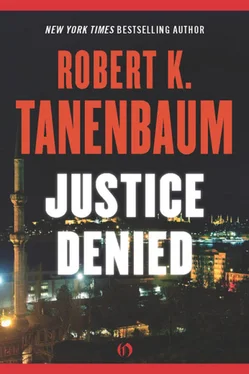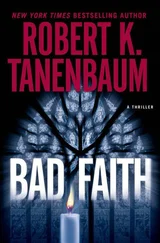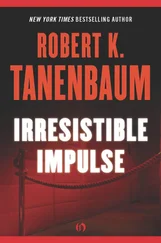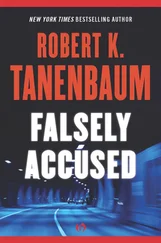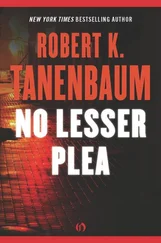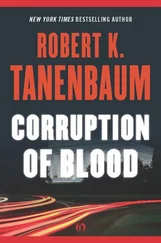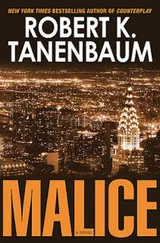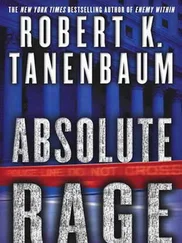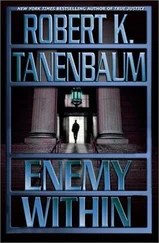Robert Tanenbaum - Justice Denied
Здесь есть возможность читать онлайн «Robert Tanenbaum - Justice Denied» весь текст электронной книги совершенно бесплатно (целиком полную версию без сокращений). В некоторых случаях можно слушать аудио, скачать через торрент в формате fb2 и присутствует краткое содержание. Год выпуска: 2010, Издательство: Open Road Integrated Media, Жанр: Криминальный детектив, на английском языке. Описание произведения, (предисловие) а так же отзывы посетителей доступны на портале библиотеки ЛибКат.
- Название:Justice Denied
- Автор:
- Издательство:Open Road Integrated Media
- Жанр:
- Год:2010
- ISBN:нет данных
- Рейтинг книги:3 / 5. Голосов: 1
-
Избранное:Добавить в избранное
- Отзывы:
-
Ваша оценка:
- 60
- 1
- 2
- 3
- 4
- 5
Justice Denied: краткое содержание, описание и аннотация
Предлагаем к чтению аннотацию, описание, краткое содержание или предисловие (зависит от того, что написал сам автор книги «Justice Denied»). Если вы не нашли необходимую информацию о книге — напишите в комментариях, мы постараемся отыскать её.
Justice Denied — читать онлайн бесплатно полную книгу (весь текст) целиком
Ниже представлен текст книги, разбитый по страницам. Система сохранения места последней прочитанной страницы, позволяет с удобством читать онлайн бесплатно книгу «Justice Denied», без необходимости каждый раз заново искать на чём Вы остановились. Поставьте закладку, и сможете в любой момент перейти на страницу, на которой закончили чтение.
Интервал:
Закладка:
There was an elaborate computer system that was supposed to do the same thing, but Karp knew that system to be out of date and unreliable. He knew it to be unreliable because he had fed enough lies into it to make it so. Bloom and his administrative satrap, Conrad Wharton, placed a high priority first on pumping clearances through the courts and second, on putting forth special effort toward punishing culprits who had the temerity to harm important or interesting people.
Karp smoothed the sheet on his desk. There were nine hundred and fifty homicides listed, which gave each of his people an average of thirty-odd each. In practice, no one worked on thirty homicides; a single homicide trial was absolutely consuming for a single prosecutor, and some cases required more than one. The saving fact was that not all cases went to trial.
Karp ran his eye over the spreadsheets. Perhaps two-thirds of the killings were what the cops called grounders: perfectly obvious events in which someone had aced a loved one or acquaintance and there was absolutely no doubt about what had gone down. When the homicide was the result of the usual brew-poverty, frustration, the last unbearable insult at an unusually vulnerable moment, the convenience of a loaded handgun-the defendant would be allowed to cop to manslaughter one or two. They’d go up for anything up to twenty-five years, depending on the judge, but most would be out after the mandatory minimum-as little as five years for manslaughter two.
On the other hand, it was not a good idea to make a habit of it in New York County on Karp’s watch. This guy Chester Hollis-Karp’s pencil moved to touch People v. Hollis on the sheet-had just killed his third wife, two years after a six-year stretch upstate for killing a girlfriend. Before that he had killed his first wife and done sixty-two months for that. Mr. Hollis would not be allowed a plea, unless it was a plea to guilty on the top count of murder two. If Mr. Hollis chose to exercise his right to a trial (as he probably would) and if he was convicted (by no means a dead certainty) he would go up for twenty-five to life, and would serve at least twenty-five years, at which point he would presumably be too decrepit to attract a fourth sucker, or to use a hammer on her if he did.
Although there were legal limitations on what pleas could be accepted for what original indictments, A.D.A.’s had enormous discretion. Karp’s job was to arrange and staff the flow of cases, within the number of trial slots he had available to him, so that a reasonable proportion of the truly wicked were removed from society for as long as possible. In general, the grounders took care of themselves. Except in cases of special circumstances, like Mr. Hollis, or where insanity pleadings or legal technicalities were involved, Karp allowed the system to crank along on autopilot. He had a competent staff he’d recruited himself, and he trusted them.
Besides the grounders, and making up about a third of all homicides, there were the mysteries: any case for which there was not an immediate suspect. The mysteries stood out on Karp’s chart because he had outlined the little box labeled “defendant” in red. The little box was often blank.
Some were of fairly obvious provenance-a dead man on a mean street with a bullet through the chest and his pockets turned out-while others were exotic: two freshly severed female heads neatly placed on a table in a West Side motel room. All were problems.
They sometimes required elaborate investigations, and typically resulted in cases based on circumstantial evidence, which usually meant that the guy, when they found him, would deny it. Legally the A.D.A.’s were supposed to be in charge of these investigations, but in general the detectives tended to do pretty much as they pleased until they had a suspect. Most prosecutors thought it was wise to concede them that role, but not Karp. He insisted that his people visit the crime scene, handle the physical evidence, and attend the autopsies of the victims.
And among the mysteries, as a matter of course, were the cases that caused the greatest political heat, the ones where either the suspect or the victim was a taxpayer of note, or where members of one race had done in members of another, or where the vic was especially photogenic or endearing, or young, or had been done to death in a particularly elaborate way or in company with an unusually large number of others.
Roland’s Turkish diplomat was one of these, naturally. Karp penciled the name Tomasian in the proper slot and moved on. He tried to hold to the belief that everyone’s life was equally precious and entitled to the same protection of the law, even though he knew that many of New York’s murder victims were not among those for whom the earth wept when they passed.
Like this one, for example. Karp frowned and made a tick mark against People v. Morales, and scrawled a note to Lennie Bergman, the A.D.A. in charge. Emilio Morales was a well-known murderous fiend up on East 112th Street. Karp believed he had stabbed any number of his mugging victims and probably killed a few, but he did not believe that Morales had cut the throat of his partner in crime, Snoopy Vega, and then kept the bloody knife and Snoopy’s blood-soaked baseball hat sitting out on the dresser in the bedroom in the apartment he shared with his grandmother and sisters, which was where the cops had said that they found them.
Instead Karp suspected that the detectives who discovered Vega’s body had decided to rid the city of the rest of the mugging team of Morales amp; Vega by pinning the hit on the partner. To many cops, one scumbag was like another scumbag. Morales had done killings for which they couldn’t nail him, and now they had one they could plausibly nail him on, with the help of a little planted evidence. Sooner or later they’d get the guy who actually did Vega on some other crime, or maybe the street would save them the trouble. Or maybe Morales actually did do it, in which case it was nicely ironic that he was being framed for it.
Karp, although a big fan of irony, and although he had blinked at plenty of burglars being sent off for a ritual year in the slams on the basis of planted evidence, did not care to extend the technique to the prosecution of murder. He continued in the quaint belief that every scumbag was different, and that the guy who had done the murder was the one, and the only one, to convict for it. Quite apart from that, and of more practical importance, Karp believed they would lose the case on present evidence.
Because Morales, in the right for the first time in his miserable life, would hang tough for a trial, and at the trial, even if the case survived a motion to suppress, the defense would chew away at the tainted evidence like a bull terrier on a prowler’s ankle, until something broke. Someone would remember seeing the hat on the street. The grandma, a saintly churchgoer, would testify that she cleaned his room every day and there had been no hat. Morales would have been playing hearts with five guys at the time of, and so the cops would have to go out and lean on the five guys to suppress the alibi, which would create more havoc at the trial, and Karp didn’t have enough trial slots to waste on fuck-uppery like this.
Karp moved on to the next case and the next, building a tottering house of cards that he prayed would see the homicide bureau through another week without either embarrassment or miscarriage of justice beyond the ordinary run. Connie Trask stuck her head in, told him it was five-thirty and that she was leaving if he didn’t want anything. He waved her away with a smile and worked on through the mysteries.
While Karp worked, Roland Hrcany was laboring in fields even less pleasant, chewing on a Tampa Nugget to keep the smell and his gorge down, and to show some class, while an assistant medical examiner scooped out Mehmet Ersoy’s guts and placed them in a large basin. They were in the autopsy room at the Bellevue morgue, to which Roland had repaired after the press conference. The M.E. was a slight red-haired Irish immigrant named Denny Maher, who liked his work and enjoyed company while he performed it.
Читать дальшеИнтервал:
Закладка:
Похожие книги на «Justice Denied»
Представляем Вашему вниманию похожие книги на «Justice Denied» списком для выбора. Мы отобрали схожую по названию и смыслу литературу в надежде предоставить читателям больше вариантов отыскать новые, интересные, ещё непрочитанные произведения.
Обсуждение, отзывы о книге «Justice Denied» и просто собственные мнения читателей. Оставьте ваши комментарии, напишите, что Вы думаете о произведении, его смысле или главных героях. Укажите что конкретно понравилось, а что нет, и почему Вы так считаете.
